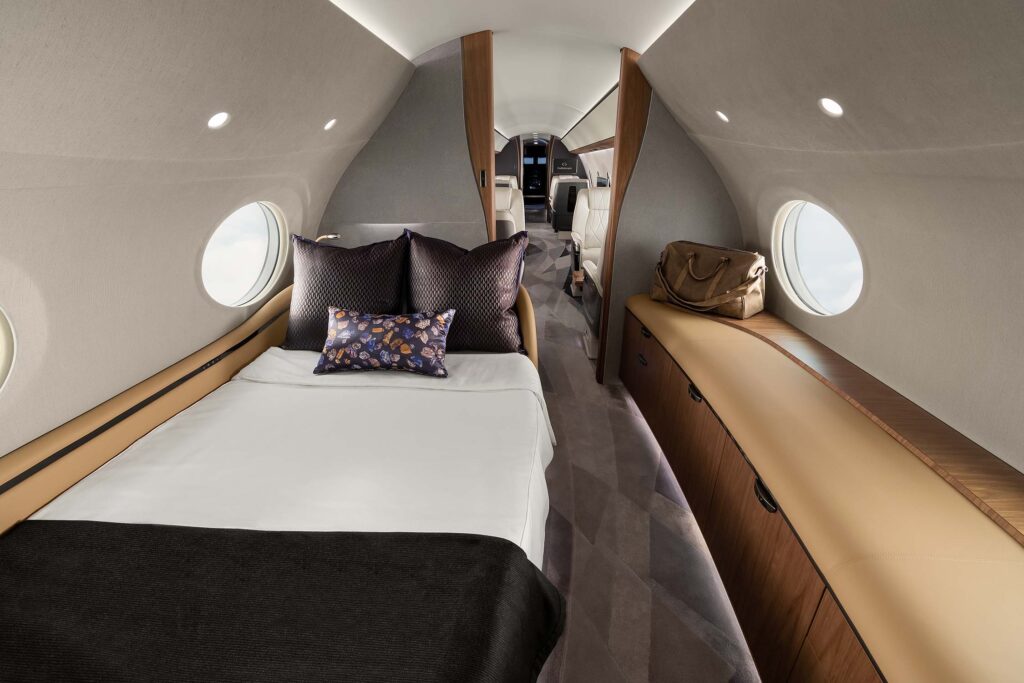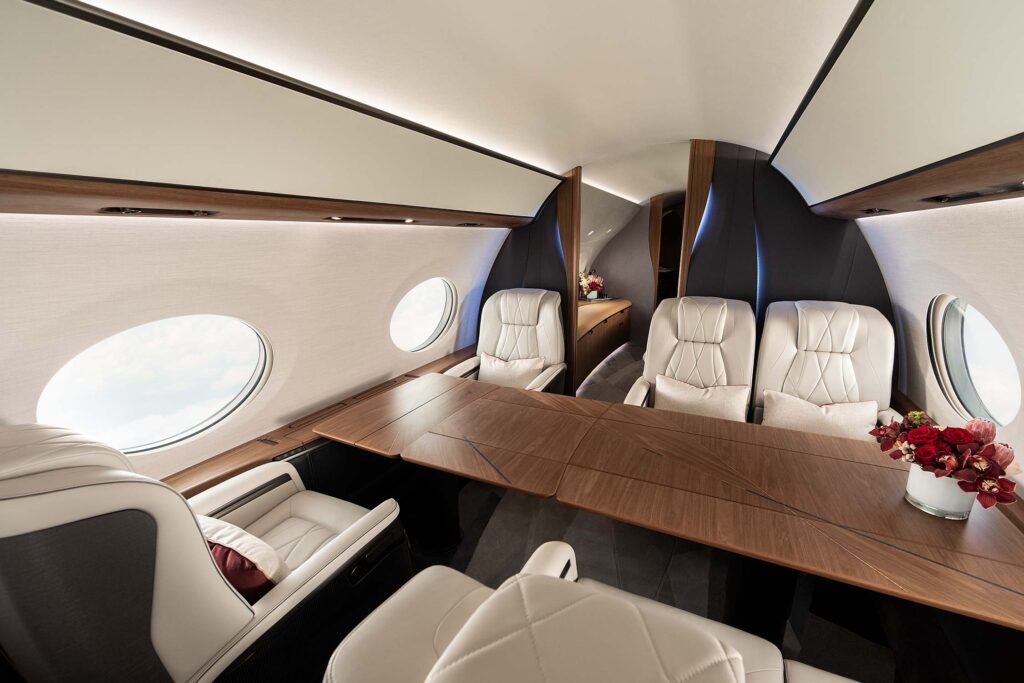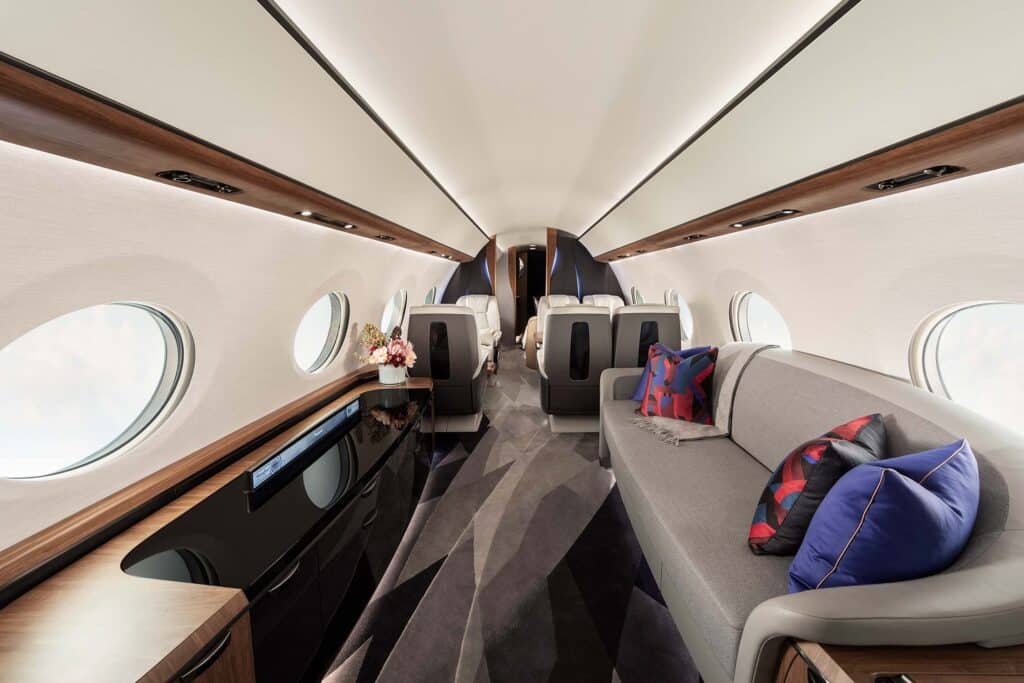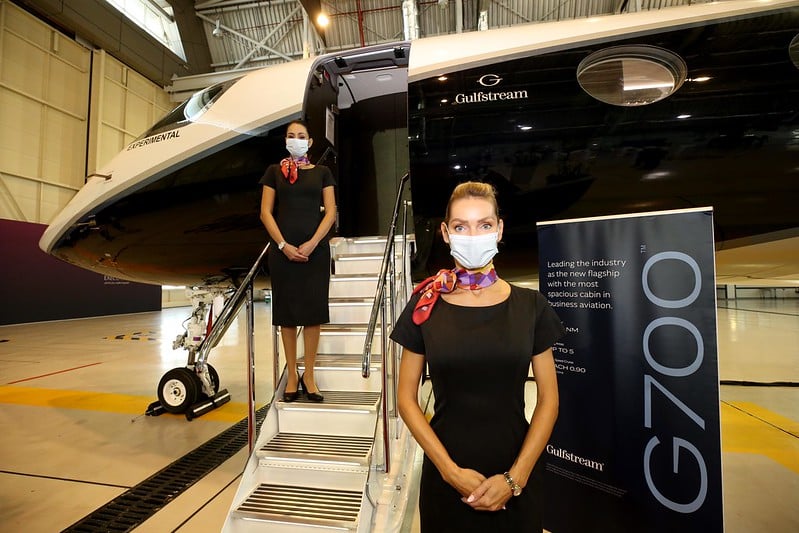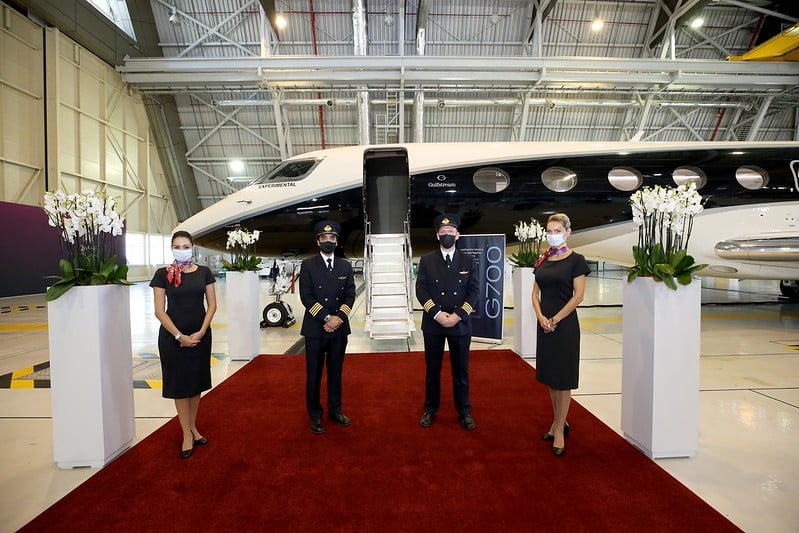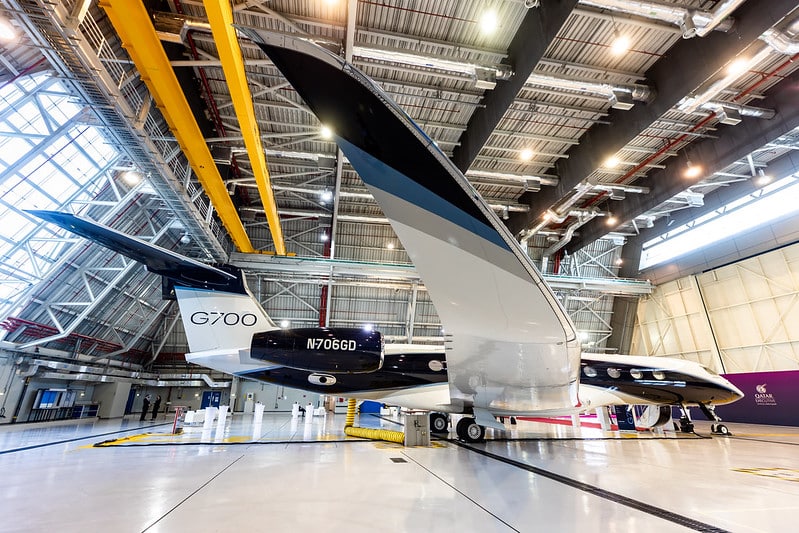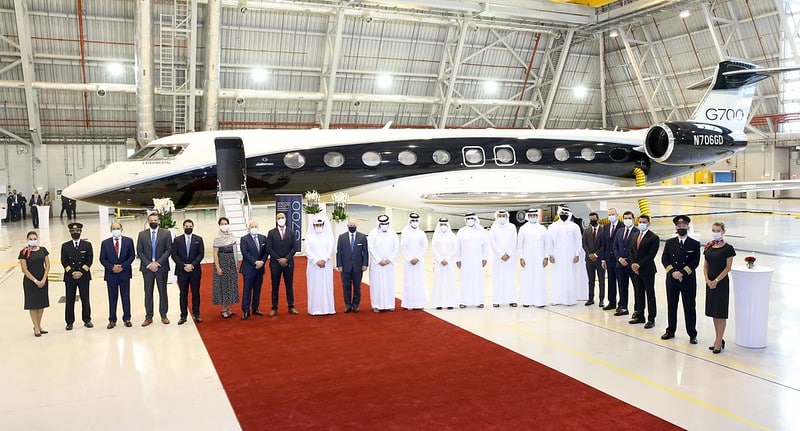Aviation
Meet the G700, a $75 million Qatar Airways business jet and its specifications.
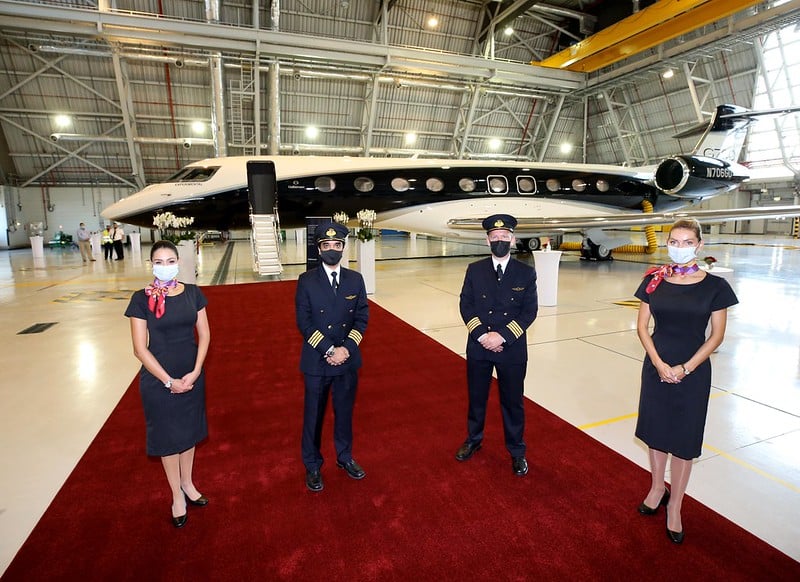
Launch Customer Qatar Airways Showcases the World’s First Gulfstream G700 in Doha in Advance of Delivery in 2022. The G700 is equipped with the Rolls-Royce Pearl 700 engine, able to operate on sustainable aviation fuel
The G700 is an industry benchmark for sustainability and innovation, allowing the airline to operate one of the cleanest and quietest business jets.
The G700 cabin, the industry’s most spacious, can be configured for up to five living areas, including an ultra-galley with 10 feet of counter space; a dedicated crew space; an entertainment and presentation area; a six-person conference and dining area; and a grand suite with shower.
The comparison of ACJ 320neo vs BBJ 737 max 8
The G700’s interior features an award-winning seat design and an all-new ultra-high-definition circadian lighting system, as well as the Gulfstream Cabin Experience, which includes 100 percent fresh, never recirculated air, the industry’s lowest cabin altitude, whisper-quiet noise levels, and 20 panoramic oval windows.
THE GULFSTREAM G700 SETS INTERNATIONAL CITY-PAIR SPEED RECORDS FOR THE FIRST TIME.
The G700 will be the latest addition to Qatar Executive’s state-of-the-art fleet of long-range and ultra-long-range aircraft. The executive charter service provider has ordered 10 of the world’s largest business jets, and will take delivery of the very first aircraft off the Gulfstream assembly line in Georgia, U.S. in 2022.
The G700, equipped with the all-new Rolls-Royce Pearl 700 engines and an advanced high-speed wing design, can fly at a record-breaking speed Mach.925 and range while promoting sustainable business aviation.
The G700 will be the most recent addition to Qatar Executive’s cutting-edge fleet of long- and ultra-long-range aircraft. Qatar has ordered ten of the world’s largest business jets, with the first aircraft leaving the Gulfstream assembly line in Georgia, US, in 2022.
It includes the award-winning Symmetry Flight Deck, which includes active control side sticks and the industry’s most extensive use of touchscreen technology.
On September 1, 2021, an all-new Gulfstream G700, Gulf stream’s largest aircraft, set the first city-pair speed records from Savannah to Doha, Qatar, and then from Doha to Paris.
The fully equipped G700 production test aircraft flew from Savannah to Doha in 13 hours and 16 minutes, covering a distance of 12,428 kilometers at an average speed of Mach 0.88. The aircraft then set another city-pair record, flying 5,469 km in 6 hours and 15 minutes at an average speed of Mach 0.90 from Doha to Paris.
The fully equipped G700 production test aircraft flew from Savannah to Doha in 13 hours and 16 minutes, covering a distance of 12,428 kilometers at an average speed of Mach 0.88. The aircraft then set another city-pair record, flying 5,469 km in 6 hours and 15 minutes at an average speed of Mach 0.90 from Doha to Paris.
On October 2019 NBAA Convention & Exhibition in Las Vegas, Gulfstream announced its new flagship, the G700, showing a video of the aircraft taxiing under its own power in Savannah. It should fly 13,890 km at Mach 0.85 or 11,853 km at Mach 0.90. Its longer cabin can accommodate up to five areas and has 20 windows. It is powered by Rolls-Royce Pearl 700 engines and has new winglets. Customer deliveries should start in 2022. The $75 million jet is a 10 ft stretch of the G650. The aircraft completed its first flight on February 14, 2020.
The G700 should share its fly-by-wire cockpit with the G500 and G600: active control sidesticks and Honeywell Primus Epic flight deck with synthetic and enhanced vision systems for a common type rating. The jet is 110 ft long, about 9.8 ft longer than the G650ER and about 0.98 ft shorter than the competing Bombardier Global 7500. Its main cabin is 57 ft long, 6.2 ft high and 8.2 ft wide; 2.6 ft longer, 0.33 ft wider and a fraction taller than the 7500’s cabin. It should carry 19 seated passengers or sleep 10. It will have a MTOW of 48,800 kg and the 81.2 kN turbofans should burn 2-3% less fuel than the G650’s R-R BR725s. The aircraft should take off from a 1,905 m runway at MTOW and land in 762 m at a typical landing weight
The aircraft is stretched by 10 ft 1 in for a longer cabin with five areas and ten windows per side, up from eight. The engines are 2–3% more efficient, the aircraft is 1815 kg heavier Maximum Takeoff weight than the G650ER for the same 13,900 km range.
Customer deliveries should start in 2022.The $75 million jet is a 3.0 m stretch of the G650. The aircraft completed its first flight on February 14, 2020

Aviation
Boeing, Antonov to Collaborate on Defense Projects

– MOU represents Boeing’s commitment to work with Ukrainian industry
– Includes exploring opportunities for collaborating on in-country support of Unmanned Aerial Systems
A Memorandum of Understanding was signed today by Boeing and Antonov Company to investigate potential collaboration on defense-related projects.
“We’re happy to keep collaborating with the Antonov Company to help Ukraine’s economic development and expansion,” stated Ted Colbert, CEO and president of Boeing Defence, Space, & Security.
Airbus and the Antonov An-225: The Best Partnership:Click here
“This agreement demonstrates our ongoing efforts to find more opportunities to work with Ukrainian industry, which was underscored by our signing of the Ukrainian Defence Industry Compact earlier this year.”
The areas of potential collaboration identified in the agreement consist of training, logistical support and overhaul services for tactical Unmanned Aerial Systems utilized by the Ukrainian Armed Forces, which includes the ScanEagle. In addition, the companies will also explore opportunities for Antonov to provide engineering support to Boeing.
The six largest cargo aircraft ever built in the aviation industry:Click here
“A strong, innovative, and efficient defense industry is key to sustainable economic development and national security, and we are extremely excited to collaborate with Boeing,” said Ievhen Gavrylov, CEO of Antonov Company.
This agreement brings a whole new level of opportunity to implement the latest and most effective solutions – in addition to the possibility of future projects with Boeing in the aerospace and defense industry.”
-

 Travel1 week ago
Travel1 week agoAir India to Expand US Operations with Three New Routes After a Decade
-

 Travel2 weeks ago
Travel2 weeks agoWhy We Should Avoid These Stamps in a Passport
-

 Airlines1 month ago
Airlines1 month agoInvestigations Reveal Fake Chinese Titanium in Boeing and Airbus Jets
-

 Tech4 weeks ago
Tech4 weeks agoChina’s CATL Plans 1,800-Mile Electric Plane Launch by 2027
-

 Airport3 days ago
Airport3 days agoTop 10 Largest Airports in the World by Size
-

 Aerospace4 weeks ago
Aerospace4 weeks agoChina’s Fighter Jets Turn Wings into Autonomous Drones
-

 Airlines4 days ago
Airlines4 days agoAir India Rolls Out A350s for Delhi-New York JFK and Newark Routes
-

 Defence3 weeks ago
Defence3 weeks agoBoeing Enhances Chinook with New Engines and Block II Upgrades at $96 Million

